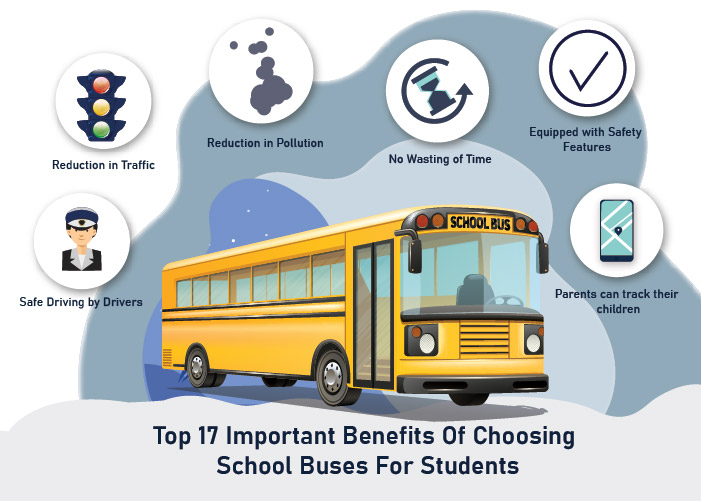The Benefits of Public Transportation
Public transportation plays a vital role in modern society, offering numerous benefits to individuals, communities, and the environment. In this article, we will explore the advantages of using public transportation and how it positively impacts our lives.
Convenience and Accessibility
Public transportation provides a convenient and accessible mode of travel for people of all ages and backgrounds. An extensive network of routes and schedules, allows individuals to reach their destinations without the hassle of driving through traffic or searching for parking spaces. Whether you’re commuting to work, going shopping, or visiting friends, public transportation offers a reliable and stress-free option.
Cost-Effective
Using public transportation is often more cost-effective compared to owning and maintaining a private vehicle. The expenses associated with car ownership, such as fuel, insurance, parking fees, and maintenance, can quickly add up. Public transportation, on the other hand, offers affordable fares and various ticket options, making it an economical choice for daily commuting and travel.
Reduced Traffic Congestion
One of the significant benefits of public transportation is its ability to reduce traffic congestion on roads and highways. Encouraging people to use buses, trains, trams, and other forms of public transport, helps decrease the number of private vehicles on the road. This, in turn, leads to smoother traffic flow, shorter travel times, and less frustration for commuters.
Environmental Sustainability
Public transportation plays a crucial role in promoting environmental sustainability. By encouraging people to use shared modes of transportation, it helps reduce greenhouse gas emissions, air pollution, and overall carbon footprint. Public transport vehicles are designed to be more fuel-efficient and emit fewer pollutants per passenger compared to private cars. By choosing public transportation, you contribute to a cleaner and greener environment.
Health Benefits
Using public transportation often involves walking or cycling to and from transit stops, which provides an opportunity for physical exercise. Regular physical activity is essential for maintaining good health and reducing the risk of various health conditions, including obesity, heart disease, and diabetes. Additionally, public transportation reduces the stress associated with driving, allowing commuters to relax, read, or catch up on work during their journey.
Social Interaction and Community Building
Public transportation brings people from diverse backgrounds together, fostering social interaction and community building. Commuting on buses or trains allows individuals to meet new people, engage in conversations, and develop a sense of belonging. Furthermore, public transportation enhances connectivity between different neighborhoods, making it easier for people to access educational institutions, healthcare facilities, shopping centers, and recreational areas.

Public transportation offers a multitude of benefits, including convenience, cost-effectiveness, reduced traffic congestion, environmental sustainability, health benefits, and social interaction. By utilizing public transportation, individuals can enjoy a stress-free commute, save money, contribute to a cleaner environment, improve their health, and connect with their communities. Embracing public transportation is not only a practical choice but also a sustainable and responsible one.
Frequently Asked Questions – Benefits of Public Transportation
1. How does public transportation benefit the environment?
Public transportation reduces pollution and greenhouse gas emissions by decreasing the number of cars on the road.
2. What are the economic benefits of using public transportation?
Using public transportation can save individuals money on fuel, parking fees, and vehicle maintenance costs.
3. How does public transportation improve traffic congestion?
By encouraging more people to use public transportation, it reduces the number of cars on the road, thus easing traffic congestion.
4. Does public transportation promote social equity?
Public transportation provides affordable and accessible transportation options for individuals who may not own a car or have limited mobility.
5. What health benefits can be gained from using public transportation?
Using public transportation promotes physical activity by encouraging walking to and from transit stops, which can improve overall health and fitness.
6. How does public transportation benefit the economy?
Public transportation supports local businesses by increasing foot traffic and making it easier for employees and customers to reach their destinations.
7. Does public transportation reduce energy consumption?
Public transportation uses less energy per passenger mile compared to private vehicles, leading to reduced energy consumption and dependence on fossil fuels.
8. How does public transportation contribute to a sustainable future?
By reducing individual car usage, public transportation helps conserve resources, reduce pollution, and create more sustainable communities.
9. What are the safety benefits of using public transportation?
Public transportation is statistically safer than private vehicles, with professional drivers, well-maintained vehicles, and safety measures in place.
10. How does public transportation benefit urban development?
Public transportation plays a crucial role in shaping the development of cities by promoting compact, walkable communities and reducing urban sprawl.




